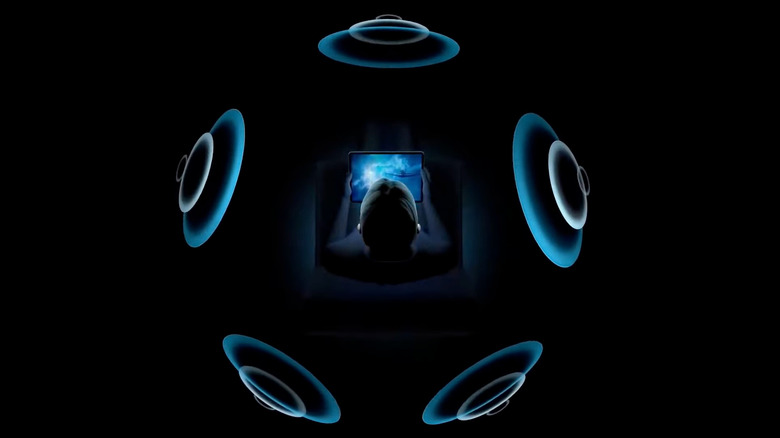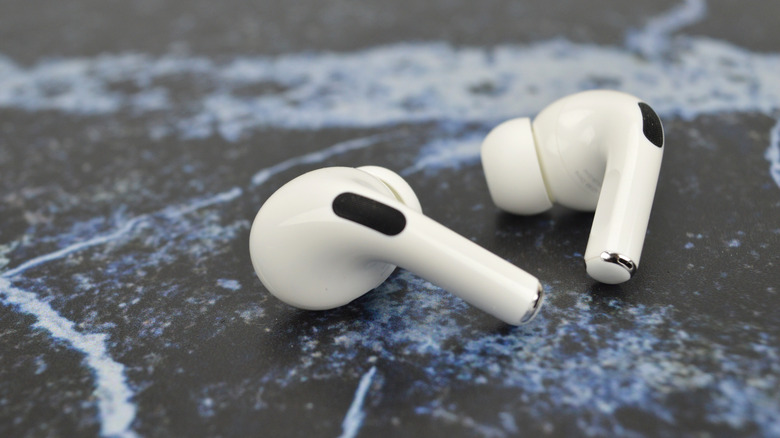What Is Spatial Audio? Everything You Need To Know
Apple's Spatial Audio is tipped to make quite an impact on how we listen to audio. While the advantages to the tech can be debated when it comes to music, they have a clear positive impact on movies and TV shows, making them sound and feel like you're in a cinema with a full surround sound system. But what is Spatial Audio? And how exactly does it work?
Well, it's a little complicated. Here's everything you need to know about Apple's new surround sound tech and how it works.
What is Spatial Audio?
Spatial Audio is Apple's branding for its 360-degree audio technology. The term "spatial audio" can refer to virtual surround sound technology in general. In this case, it's a term that specifically relates to Apple's tech. In other words, Spatial Audio refers to Apple's technology for delivering surround sound through headphones, making it sound like you're actually in a surround sound environment.
How does Spatial Audio work?
The tech essentially takes a 5.1, 7.1 or Dolby Atmos signal, and applies a series of audio filters and EQs to those different channels, making it sound like those audio tracks are placed around you. Different tracks can sound like they're in front of you, next to you, behind you, and even above you. This essentially recreates the experience of being in a cinema.
Spatial Audio in particular is unique because it adds another element to the mix — the positioning of your head. Apple's AirPods have accelerometers and gyroscopes. This allows them to track how your head moves, ultimately making for a more realistic experience. So, if there's a track playing on your right, and you turn around, it will play on your left. That's unlike other virtual surround sound tech.
How to get Spatial Audio
You'll need a few different things to get Spatial Audio. For starters, you'll need a pair of compatible headphones, and currently, only certain AirPod models support the tech — the AirPods Pro and the AirPods Max.
You'll also need a compatible source. You can get the tech on an iPhone 7 or later, an Apple TV or Apple TV 4K, or a recent iPad or Mac models. These Mac models need to have Apple Silicon. You can get the full list of devices that are supported here. It's important to note that only devices launched in or after 2018 support Dolby Atmos with Spatial Audio. You don't necessarily need Dolby Atmos for the technology, but using it will produce the best results.
Support for the tech on the Apple TV is actually new. Originally, the tech was only available on the iPhone and the iPad, making it useful for on-the-go watching, but not as helpful for watching in your home. Thankfully, that's changing with tvOS 15, which will support the technology when it launches later this year.
On the operating system side, you'll need iOS 14 or iPadOS 14 or later, tvOS 15 or later, or MacOS Monterey or later.
Then, you'll need to make sure you're using an app that supports the tech. Apps that support 5.1, 7.1, or Dolby Atmos also support Spatial Audio. That includes Apple's own Apple TV and Apple Music, as well as third-party apps like Amazon Prime, Disney+, and more.
How is Spatial Audio different from other virtual surround sound?
As mentioned, Spatial Audio is mostly different from other virtual surround sound tech in that it offers head-tracking. That means that it will feel more like you're surrounded by speakers, than that you have headphones on. That helps make the tech even more immersive than other options. That's especially true when you watch a movie — as the audio will always be centered on the screen.
There have been plenty of other attempts at virtual surround sound in the past. Dolby Atmos for Headphones has been around for a while, while Sony's 360 Reality Audio format is built for music. There are some major differences between these options and Apple's. For starters, they're a little more open. To use the tech, you need both a compatible pair of headphones and an Apple device like an iPhone or an iPad. Other virtual surround sound technologies often rely on an app of software, but don't always hinge on having a specific device. Normally, you do need compatible headphones though.
Is Spatial Audio good?
Virtual Surround Sound is always a bit hit and miss, but when it comes to Spatial Audio, it seems to be more hit. That's especially true for watching movies and TV shows. In those situations, Spatial Audio helps make you feel like you're in the center of the action.
Things aren't always as good when listening to music. There's now tons of music available in Dolby Atmos on Apple Music. Some of it is really enjoyable to listen to in Spatial Audio. Other tracks just don't feel right though. If you want to regularly use Spatial Audio for listening to music, you may want to make a playlist of songs that you actually like in Spatial Audio.
Will Spatial Audio come to gaming?
As mentioned, Spatial Audio is available for movies and TV shows, but it's not really available for video games yet. Apple hasn't announced the availability of Spatial Audio in any video games, like those on Apple Arcade, just yet — but it's reasonable to assume that it might eventually.
Hopefully, third-party app developers will be able to build support for the technology into their games soon, across all of Apple's platforms.


